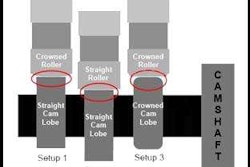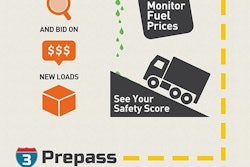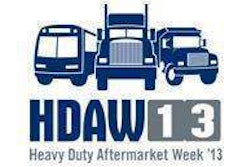I am concerned about a continuing trend toward so called ‘private’ brands — both by independents and dealer ‘all-makes’ programs.
Users of this marketing tool are trying to make one of the following points as publicly as possible:
• We are offering our own alternate brands because national brands are application coverage or technologically insufficient; or,
• This new brand represents a way to beat the ‘marketing tax,’ those charges for advertising, cataloging, merchandising and training that neither the customer nor distributor needs or wants; or,
• We distributors (as the last mile link in the supply chain), deserve a greater cut of the margin pie; or,
• This label is the only way we can be sure you bought this from us in the first place when you want to return it; or,
Over 40 percent of Wal-Mart’s sales are store (private) label; part of the $65 Billion spent on private label products (PLP) in the U.S. last year.
Shouldn’t we be on the band wagon?
With the solid supply base we have in the heavy-duty aftermarket, with at least three national branders competing in each product segment, I frankly don’t get the need for an increasing number of alternate brands.
Several recent studies conclude that 50 percent of private brands are net losers from a distributor profitability perspective even though the store brands have higher margins built into their lower price.
The difference between Wal-Mart and Willie’s World of Truck Parts private labels is supply chain management.
Private labels are brands, and relevant differentiation is the defining aspect of a brand. Without this, PLP is a waste of inventory investment and a diffusion of focused marketing effort.
Differentiation is the most important thing a brand (product or distributor service) can deliver. Academics have shown that relevant differentiation today is a leading-edge indicator of future profitability and market share.
The key question today has to be: Does your organization’s brand have consumer-relevant, consumer-compelling benefits that are unique and believable? Or is your store brand simply an excuse to arbitrage temporary cost differentials on a couple containers?
True PLP success reflects distributors or retailers who recognize private label as a pure demand response — not a product push device — that is integrated into the store’s brand. President’s Choice is identical to Coke (down to one part in a billion), but is supported by an unbelievable responsive supply chain. It is cheap to buy, profitable to make and distribute, but no one ever talks about how much better it tastes.
Absent this robust supply chain integration, price is the worst competitive differentiator a distributor can choose. It is easily copied, reduces profits and dilutes brand equity. To a certain extent, line offerings and product features are limited differentiators, because they also can be easily copied. The most powerful differentiators tend to be one of the following:
• Emotional, experiential and self-expressive benefits;
• Customer service elements that are invisible to competitors (such as rigorous customer service training and employee empowerment)
Brands exist because they are efficient shorthand that insures important customer needs will be met in compelling ways.
In a recent Harvard Business Review article, “Breaking Consumer Compromises,” the authors state the best way to create breakaway business growth is to identify all the ways in which a business has made compromises with the consumer, and then break them all so that that consumer gets exactly what he needs and wants.
They have discovered that five factors drive customer brand insistence: awareness, accessibility, value, relevant differentiation and emotional connection.
Employees ARE the Brand.
Increasingly, distributor organizations are finding it critical to gain employee’s understanding and enthusiastic support of their own brand’s essence, promise and personality.
They know that they must achieve integrity between what the distributor’s brand says about itself and how it actually behaves. They understand that consistently delivering the brand promise at each and every point of customer contact is critical to their success.
These factors quickly become clearly more dependent upon the human resource function than the marketing function.
Successful heavy-duty players have discovered that the ‘moment of truth’ in the delivery of the brand promise almost always occurs in customers’ interactions with front-line employees.
Enthusiastic employees spread enthusiasm to customers.
It makes sense then that management must market to employees as much as to customers. If your employees don’t ‘get it,’ neither will your customers and this can only happen if top management aligns all of its organization’s processes and systems in support of its own brand’s promise.
Whether referring to products or a distributor’s services, it is pretty simple. What do successful brands do?
• Stand for something
• Are trustworthy;
• Treat people well;
• Are different in relevant ways;
• Evolve with their customer’s needs.
A more rigorous, personal commitment to differentiating your business’ products and services will help maintain — even increase — margins and boost revenue, while expanding your customer base for the future.
Bill Wade is a partner at Wade & Partners and a heavy-duty aftermarket veteran. He is the author of Aftermarket Innovations. He can be reached at [email protected].











